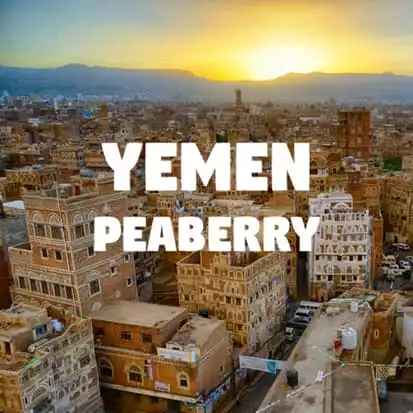Best Yemen Coffee: The Taste Tested Ultimate Guide
Just across the water from Ethiopia, Yemen has been growing coffee for hundreds of years. Their reputation for producing some of the world’s best beans remains to this day.
If you’re wondering how you can try Yemeni coffee, keep reading.
In this article, I’ll spotlight three of the best Yemeni coffee beans you can buy.
Plus, I’ll give you some context on the long history of the Yemeni coffee industry. I’ll also explain the defining traits of mocha coffee and how the growing region impacts flavor.
Yemen Coffee History
Yemen is one of the original purveyors of the coffee industry. Recent civil war has halted Yemen coffee production. But world demand for Yemeni beans remains high.
Many experts believe that Yemen was one of the original cultivators of the coffee crop.
According to coffee history, arabica coffee plants first appeared in Ethiopia. But the Yemeni people adapted the crop into the drink we sip today.
Coffee made its way to Yemen from Ethiopia across the Red Sea. This most likely occurred in the late 6th century when Ethiopians invaded the area. They called the plant qahwa, which today translates to coffee.
Yemeni Arab monks began drinking coffee to stay awake late into the night for prayers. Over time, the beverage percolated down into the lower working classes.
Soon, coffeehouses began to pop up all over the Yemeni port city of Mocha. Yemen coffee then spread to nearby countries such as Egypt, Turkey, and Persia.
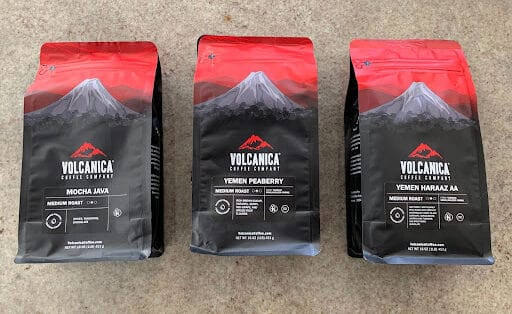
Coffee farmers in Yemen still use growing techniques that date back over 500 years.
Farmers grow the trees on mountainous terraces at high altitudes – upwards of 7,000 feet above sea level. After the trees are grown, farmers carefully pick the coffee cherries by hand.
They place these cherries on rooftops to dry in the sun for four weeks. Yemeni farmers then split the husks and remove the beans using millstones.
Worldwide, most coffee farmers remove the seeds (green beans) before drying. But Yemeni coffee growers remove the seeds after they dry. This dry processing contributes to flavor inconsistencies.
In fact, inconsistency abounds in Yemen coffee. The shape of the beans varies, and the flavor differs from cup to cup. This variability offers drinkers an endearing air of mystery when brewing Yemeni coffee.
No part of the crop goes to waste. In Yemen, people use the husks to brew another traditional drink called qishr. The husks produce a tea-like drink spiced with cinnamon and ginger. Qishr doesn’t require roasting, making it a simpler alternative to coffee.
Yemen Mocha Beans
If you’ve so much as stepped into a coffee shop, you’ve probably heard of the term mocha. Today it has come to mean a drink prepared with coffee and chocolate. But mocha coffee originates from coffee leaving Yemen’s port city of Mocha, or Al-Makha.
Mocha coffee is a broad term to describe the beans grown and processed in Yemen.
During the 1500s, Yemen held a coffee monopoly over world bean production. Yemen merchants exclusively sold their coffee as steeped or partially roasted berries. This method prevented anyone abroad from germinating the seeds. So Yemen held onto its monopoly for over 150 years.
So how does mocha, the chocolatey drink, relate to Yemeni coffees?
Yemeni beans are famous for their rich dark chocolate notes. Coffee houses worldwide tried to imitate this flavor in their own coffee.
Essentially, they added chocolate to coffee brewed from beans of other origins. These imitation attempts resulted in the mocha coffee we know today.

Best Yemen Coffee Beans
If you’re just starting out with Yemen coffee, it can be hard to choose from so many options. Plus, these mocha java gems can get pretty expensive. So you don’t want to make the wrong choice.
To simplify things, check out my recommendations for a few of the best Yemeni coffee beans you can buy.
1. Yemen Peaberry Coffee | Volcanica
Volcanica’s Peaberry coffee is a blend that comes from Yemen’s Raimah and Hajjah regions.
- Well Balanced Medium Roast
- Dark Chocolate Notes
- Caramel After Taste
Volcanica selects and processes the ripest cherries from 75 different farms. The beans then pass through a local milling company. At this point, sorters separate peaberries from the other beans.
What is a peaberry?
Peaberries occur in only about 5% of coffee cherries. Peaberry coffee is sweeter and more flavorful than java brewed from regular beans.
While a normal coffee cherry has two green beans inside, a peaberry has only one. These berries are smaller and denser than regular beans.
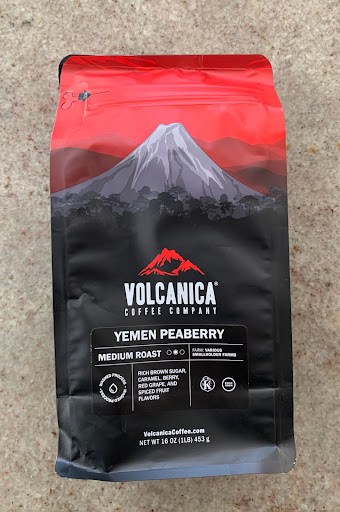
As the only bean in the cherry, the peaberry retains more flavor, sweetness, and complexity. That’s the theory anyway. But I wanted to see for myself.
I brewed the Peaberry by using a French Press, and the coffee smelled deep. I mainly got chocolate notes and darker spices.
Volcanica’s Yemen Peaberry Coffee is a medium roast. I found it to be very well-balanced and drinkable, not too bright or bitter. I mainly tasted dark chocolate and spiced red fruits. Caramel dominated the aftertaste.
The beans come in a beautiful 16 oz bag describing the coffee’s origin and history. It also describes the tasting notes and pairings the blend brings to the table. The bag is resealable to preserve freshness.
2. Yemen Haraaz AA | Volcanica
This bag is a very special single-origin Yemen coffee from the mountains of Haraaz. (Local farmers grow these beans at altitudes exceeding 4,500 feet.) But the coolest thing? Volcanica dubs their Yemen Haraaz the world’s oldest cultivated coffee beans.
The Haraaz AA is another medium roast. But Volcanica describes it as more acidic. Notes of lemon zest and cranberry brighten the cup. The Haraaz AA also has notes of toffee and praline to sweeten the deal.
I brewed the Haraaz AA through a French Press. It tasted extremely clean and drinkable, with a medium-light body, and pleasant acidity. I got a heavy dose of fruit, and the flavor was consistent throughout.
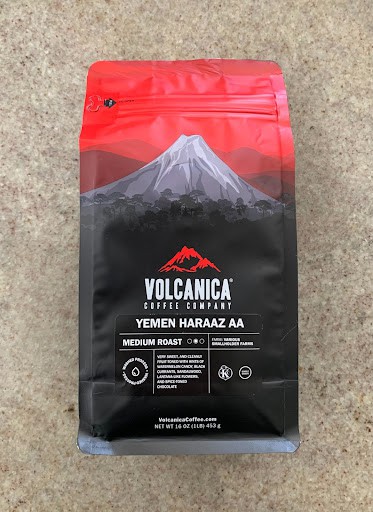
Even if you usually prefer a dark roast, give it a shot. This coffee is great for those looking for a versatile, drinkable Yemeni coffee.
3. Mocha Java Blend
Volcanica’s Mocha Java is a multicultural blend of beans. It consists of Mocha coffee from Yemen mixed with Java coffee from Indonesia. This blend pays homage to its Yemeni roots by reflecting the oldest coffee blend on record.
- Complex & Well Spiced
- Chocolatey With Earthy Undertones
The result is a high-quality, delicious cup of coffee.
Mocha Java is known for its unique flavor profile of contrasting tastes and textures. The blend combines two traditions. First, it conjures Yemen coffee notes of dark chocolate, burnt sugars, and red fruits. It then pairs these flavors with traditional Asian coffee notes and earthy undertones.

This particular blend is a medium roast. It lends itself well to brewed coffee methods like pour over and drip machines. These methods lead to a complex, well-spiced, and full-bodied cup that is very easy to sip. It is particularly renowned for its smoothness.
I brewed using a French Press. The result was a chocolate-meets-earth flavor profile that was very smooth. It had a heavier mouthfeel but was still very drinkable.
You can grab a bag of whole bean Mocha Java at the link below.
The Buying Guide To Coffee Beans from Yemen
Exports of Yemen coffee have dwindled since the Yemeni Civil War began in 2014.
Let’s take a deeper look at cultivation in Yemen. That way, you can make the best decision about which Yemeni coffees you want to buy. Even if your options are more limited at the moment.
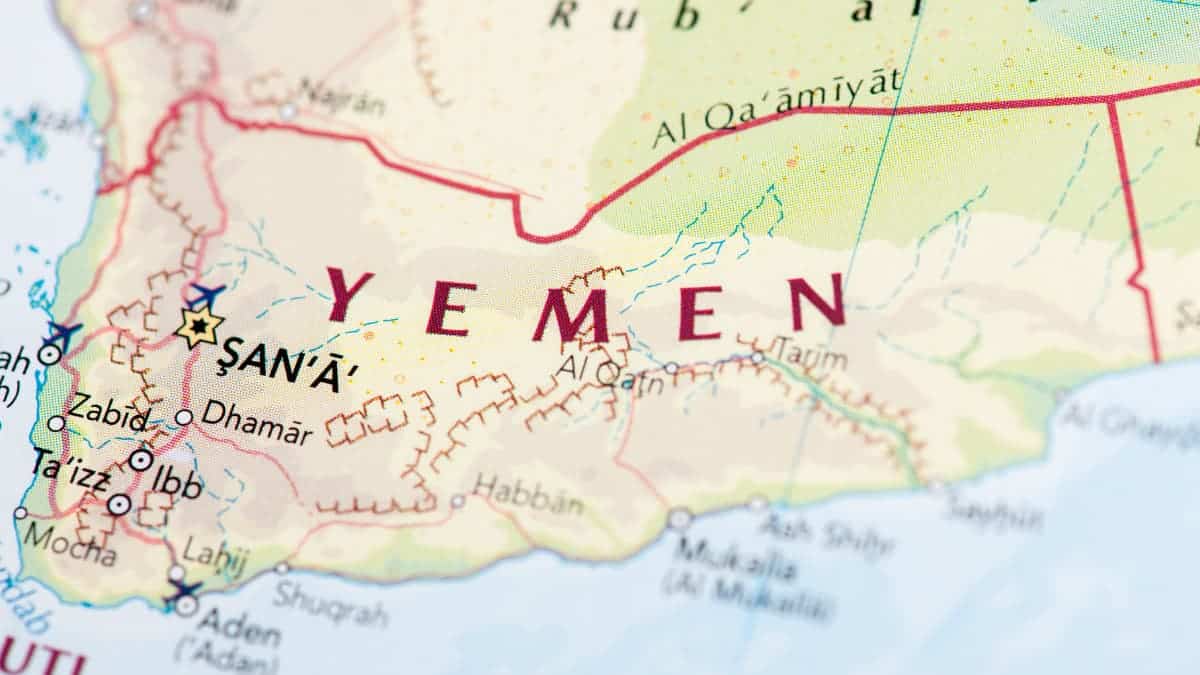
How Coffee Is Grown In Yemen
In Yemen, coffee grows on planed mountainous terraces at elevations above 7,000 feet. Yemeni farmers have grown coffee this way for over 500 years.
Farmers handpick ripe cherries. They then dry them on rooftops and in special coffee caverns. The green beans remain in the cherry during the drying process.
Once the fruit has dried, farmers can easily separate the seed from the husk.
A few factors limit Yemeni coffee production. (Even without conflict depleting exportation.)
The regions where coffee grows in Yemen don’t get a lot of rain. Small family farms plant and raise coffee trees without using chemicals. Moreover, farmers largely grow and process the crop without the help of technology.
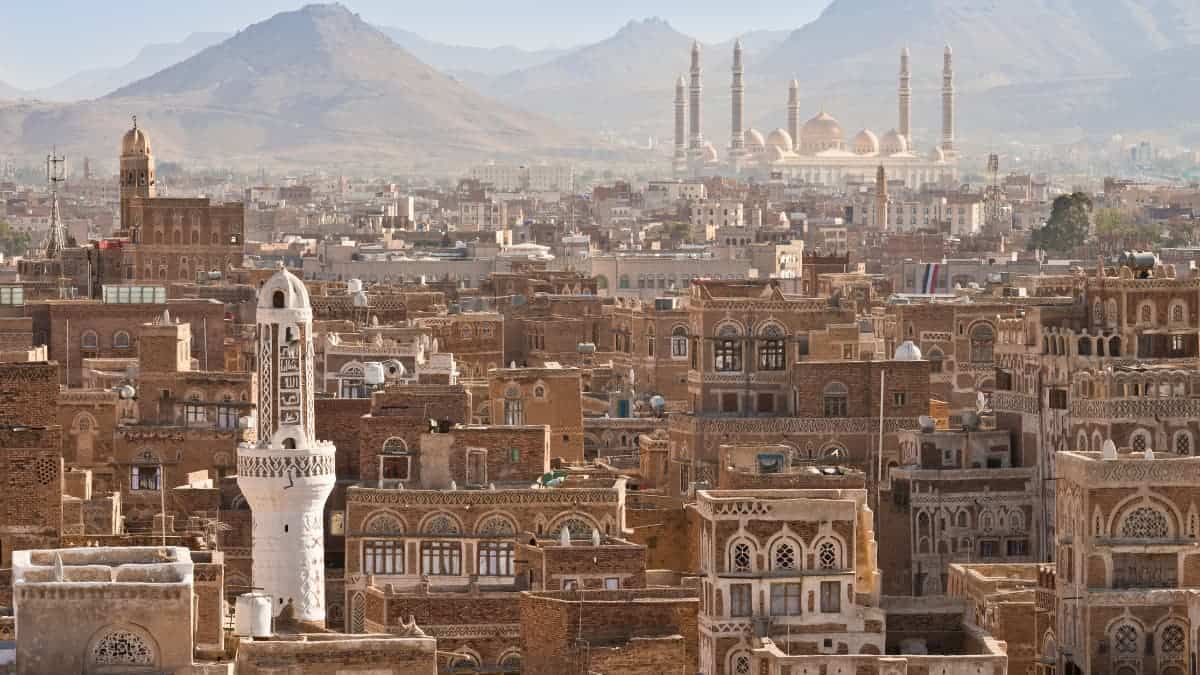
Yemeni Coffee Growing Regions
Many different regions of Yemen grow coffee beans. Each region produces beans with unique characteristics and dominant flavor profiles. Let’s look at the most famous areas for growing Yemeni coffee.
Sanani Coffee
Sanani coffee describes several coffee varieties from the mountainous area west of Yemen’s capital, Sanaa.
Sanani coffee grows at a relatively lower altitude. As a result, these beans are considered lower quality than beans from other regions of Yemen.
Even still, Sanani coffee is balanced and fruity, with a medium body. Not too heavy, not too bright — this variety has less of the winey acidity typical of Yemeni coffee.
Despite their lesser reputation, Sanani beans make an excellent introduction to the Yemeni coffee world. Balanced flavor and a lower price point. What’s not to love?
Harazi Coffee
Harazi coffee comes from the mountains of Haraaz, west of the capital city Sanaa. Harazi coffee tends to be crisp and clean. These beans offer an elegant drinking experience that doesn’t weigh you down.
High-quality Harazi beans brew a very gentle cup. The flavors are much more subtle than other bean varieties. Fruity and light spice aspects shine through.
If you’re looking for an exceptional, clean cup of coffee, Harazi coffee is for you. It’s very easy to drink, offering brightness without too much acidity.
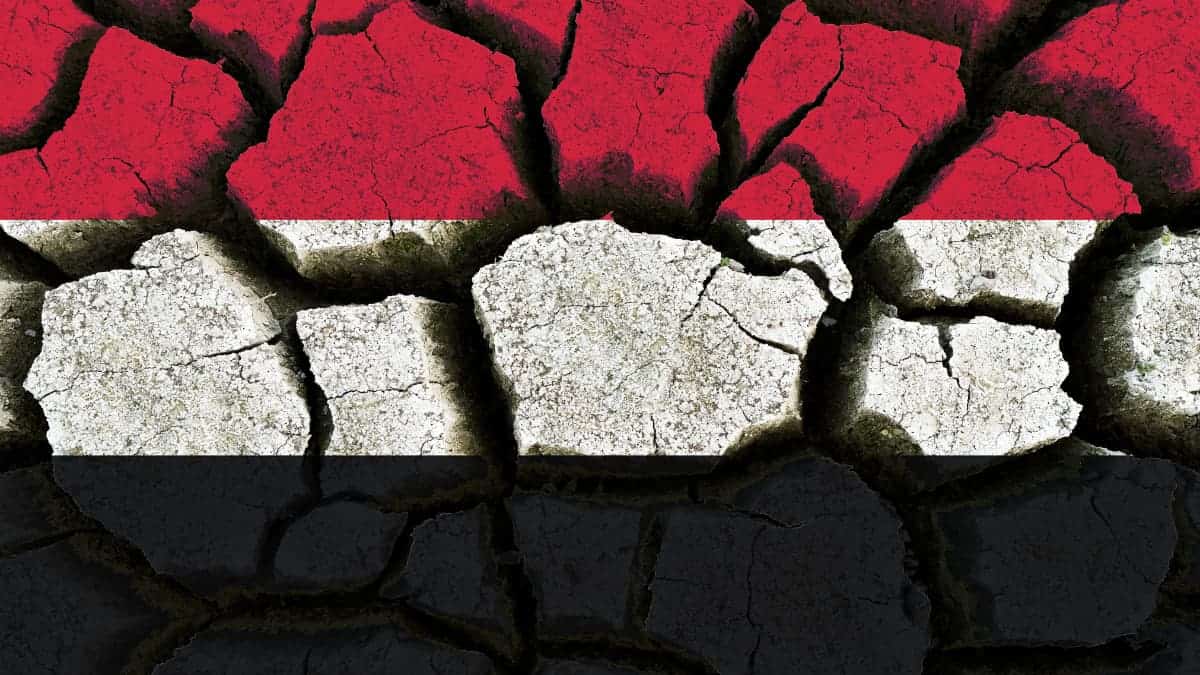
Ismaili Coffee
The Ismaili coffee plant is a variety of coffee tree. It is one of the few ancient varieties still growing in Yemen.
This kind of coffee grows in the Banai Ismail mountains, located within the Haraaz region. But the coffee industry categorizes the beans as Ismaili, not Haraazi.
Why?
Ismaili coffee grows at the highest altitude of any Yemen coffee. The high altitude gives it a unique taste. Moreover, the flavor changes drastically depending on the roast.
Ismaili coffee is among the best Yemen mocha coffee.
These pea-shaped beans create a bold acidity countered by warmer chocolate and fruits. The brew features spicy undertones like tobacco, cardamom, and even leather.
If you can get your hands on some of these beans, do – they’re one of the highest quality in Yemen, if not the world.
Mattari Coffee
Coffee grown in the Mattari region is also considered of the highest quality. It offers a heavier body than Ismaili coffee, with strong dark chocolate undertones. A wine-like acidity helps lift the flavor and brighten the brew.
Mattari coffee is grown in the region of Bani Mattar, which lies west of Yemen’s capital city, Sanaa
Hayma Coffee
The best way I can describe Hayma coffee beans is as fresh red fruits wrapped in chocolate. As you might have guessed from this description, the coffee’s flavor profile is excellent.
It boasts a full mouth feel and balance. But it also maintains the exquisite acidity for which Yemen coffees are famous.
The coffee grows in mountainous villages in the Hayma mountains west of Sanaa. The fertile soil and wetter climate mean that some trees are over 100 years old and still producing.
In recent years, however, disease has struck the region. As a result, coffee output has plummeted to the lowest of these regions.
The Final Verdict: Best Yemeni Coffee Beans
Full-bodied and balanced. Complex and earthy. Known to true coffee enthusiasts as Yemen mocha, these beans create some of the best coffee in the world.
If you’ve never tried mocha coffee, I recommend first sipping on Sanani beans. The lower price point offers low-stress experimentation while still producing a lovely cup.
Yemeni coffee beans have wowed coffee lovers for over five centuries. So, really, it’s hard to go wrong.

